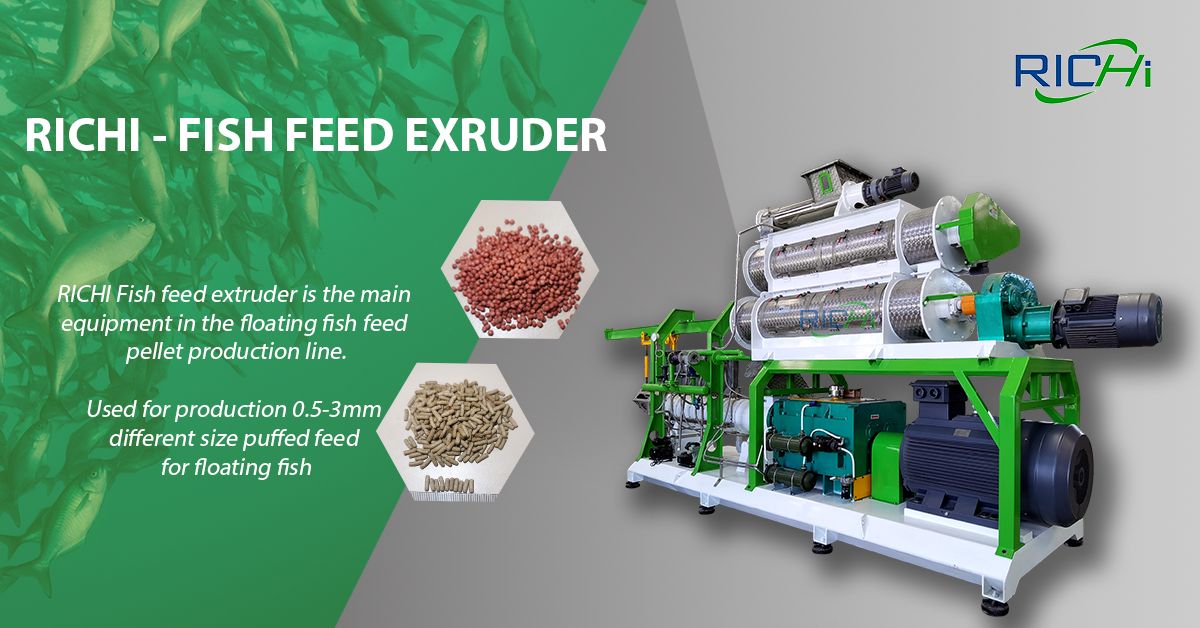In the rapidly evolving aquaculture industry, particularly shrimp farming, the choice of feed processing equipment plays a crucial role in determining the quality of feed and, ultimately, the success of the operation. Two primary technologies dominate the market for shrimp feed production: pellet machines and extruder machines.
Both have their strengths and weaknesses, and the choice between them depends on various factors. This article compares shrimp feed pellet machines and shrimp feed extruder machines to help producers make an informed decision.
Shrimp Feed Pellet Machines
Shrimp feed pellet machines, also known as pellet mills, use compression to form pellets. The feed mixture is pressed through a die by rollers, creating dense, sinking pellets ideal for shrimp.Advantages:
- Lower initial investment cost
- Lower energy consumption
- Simpler operation and maintenance
- Better suited for smaller-scale operations
- Can handle traditional ingredients well
- Produces denser, sinking pellets preferred by shrimp
Disadvantages:
- Limited control over pellet density and buoyancy
- Lower water stability of pellets
- Limited fat inclusion (typically up to 5-6%)
- Less efficient nutrient utilization by shrimp
- Limited flexibility in ingredient use
Shrimp Feed Extruder Machines
Extruder machines use a combination of heat, moisture, and pressure to form pellets. The ingredients are cooked and forced through a die by a screw mechanism, allowing for more control over pellet characteristics.Advantages:
- Produces pellets with excellent water stability
- Can incorporate higher fat levels (up to 20-30%)
- Improved digestibility of feed ingredients
- Better feed conversion ratio (FCR)
- Can process a wide range of ingredients, including novel proteins
- Precise control over pellet density and buoyancy
- Can produce floating, slow-sinking, or sinking pellets
Disadvantages:
- Higher initial investment cost
- Higher energy consumption
- More complex operation and maintenance
- May degrade certain heat-sensitive nutrients
Comparison of Key Factors
- Pellet Quality and Water Stability
Extruder machines generally produce pellets with superior water stability compared to pellet machines. This is crucial for shrimp feed, as shrimp are slow feeders and the feed needs to remain intact in water for extended periods. The extrusion process allows for better starch gelatinization and protein denaturation, resulting in pellets that can maintain their integrity for 4-6 hours or more.Pellet machines can produce water-stable pellets, but they often require additional binders and may not achieve the same level of stability as extruded pellets.
- Nutritional Value and Digestibility
Extruder machines have an edge in terms of nutritional value and digestibility. The cooking process in extrusion improves the digestibility of ingredients, particularly plant-based proteins. This leads to better nutrient utilization by shrimp and potentially lower feed conversion ratios (FCR).Pellet machines, while capable of producing nutritious feed, do not alter the ingredients to the same degree. This can result in slightly lower digestibility and nutrient availability.
- Flexibility in Ingredient Use
Extruder machines offer greater flexibility in ingredient use. They can process a wide range of ingredients, including novel and plant-based proteins, and handle higher levels of fat inclusion. This allows feed manufacturers to optimize formulations based on ingredient availability and cost.Pellet machines are more limited in the types of ingredients they can process effectively and have lower fat inclusion capabilities.
- Production Capacity and Scalability
Extruder machines generally have higher production capacities and are more suitable for large-scale operations. They can easily scale up production to meet increasing demand.Pellet machines, while available in various sizes, are generally better suited for small to medium-scale operations. They may struggle to meet the production demands of large shrimp farming operations.
- Energy Consumption and Operational Costs
Pellet machines have an advantage in terms of energy consumption and operational costs. They require less energy to operate and have simpler maintenance requirements, leading to lower overall operational costs.Extruder machines, due to their cooking process, consume more energy and have higher operational costs. However, this may be offset by improved feed efficiency and higher production capacities.
- Initial Investment
Pellet machines typically have a lower initial investment cost compared to extruder machines. This makes them an attractive option for smaller operations or those with limited capital.Extruder machines require a higher initial investment, which can be a significant barrier for some producers. However, the long-term benefits in terms of feed quality and efficiency may justify the higher cost for larger operations.
- Feed Characteristics and Shrimp Performance
Extruder machines offer more control over feed characteristics such as density, buoyancy, and texture. This allows producers to tailor the feed to specific shrimp species and growth stages, potentially leading to better shrimp performance.Pellet machines produce more uniform, dense pellets, which are suitable for most shrimp species but offer less flexibility in terms of feed characteristics.
Conclusion:
Which is Better?The choice between a shrimp feed pellet machine and a shrimp feed extruder machine depends on various factors, including:
- Scale of operation
- Available budget
- Desired feed quality and characteristics
- Types of ingredients to be used
- Energy costs and availability
- Target market and quality requirements
For small to medium-scale operations with limited budgets and access to traditional ingredients, a pellet machine may be the more suitable choice. It offers a cost-effective solution for producing basic shrimp feed pellets with acceptable quality.
For large-scale operations, those targeting premium markets, or producers looking to optimize feed efficiency and use a wide range of ingredients, an extruder machine is likely the better option. The superior pellet quality, improved digestibility, and greater flexibility in formulation can justify the higher initial investment and operational costs.
Ultimately, the decision should be based on a careful analysis of the specific needs and constraints of the shrimp farming operation. Both technologies have their place in the industry, and the right choice can significantly contribute to the success and profitability of a shrimp farming venture. (feed mill pellet machine)










